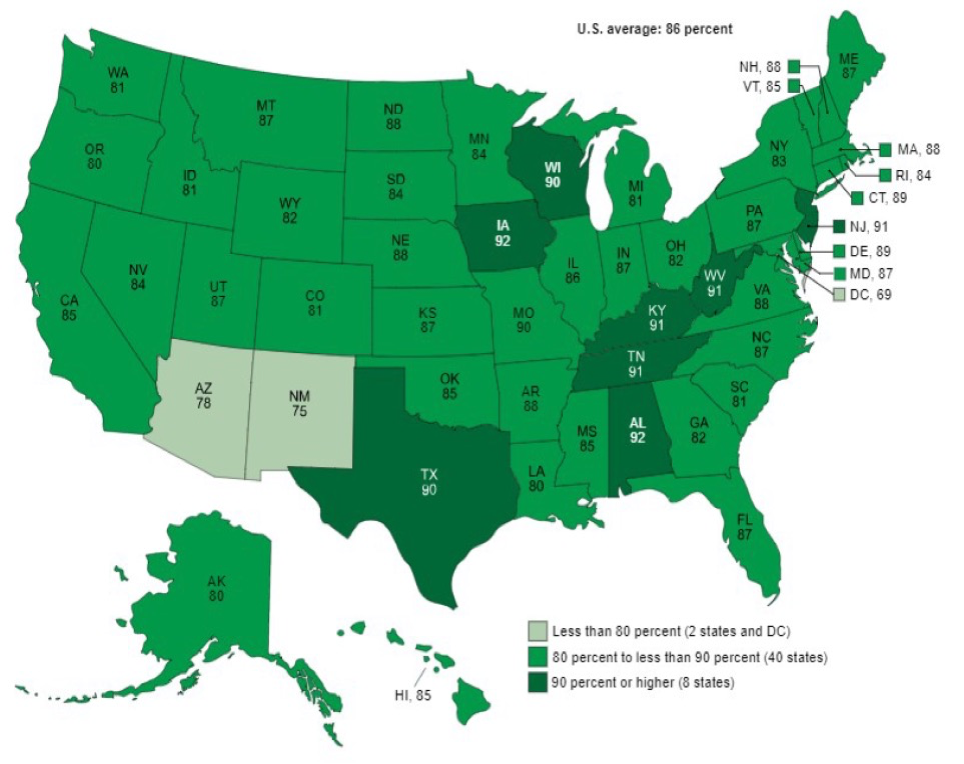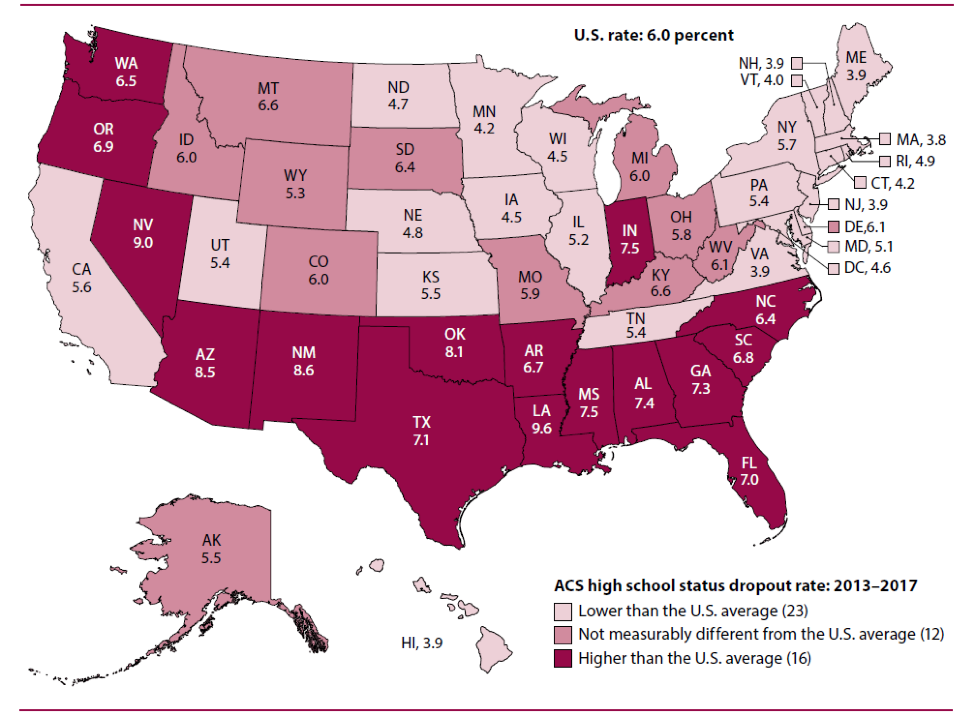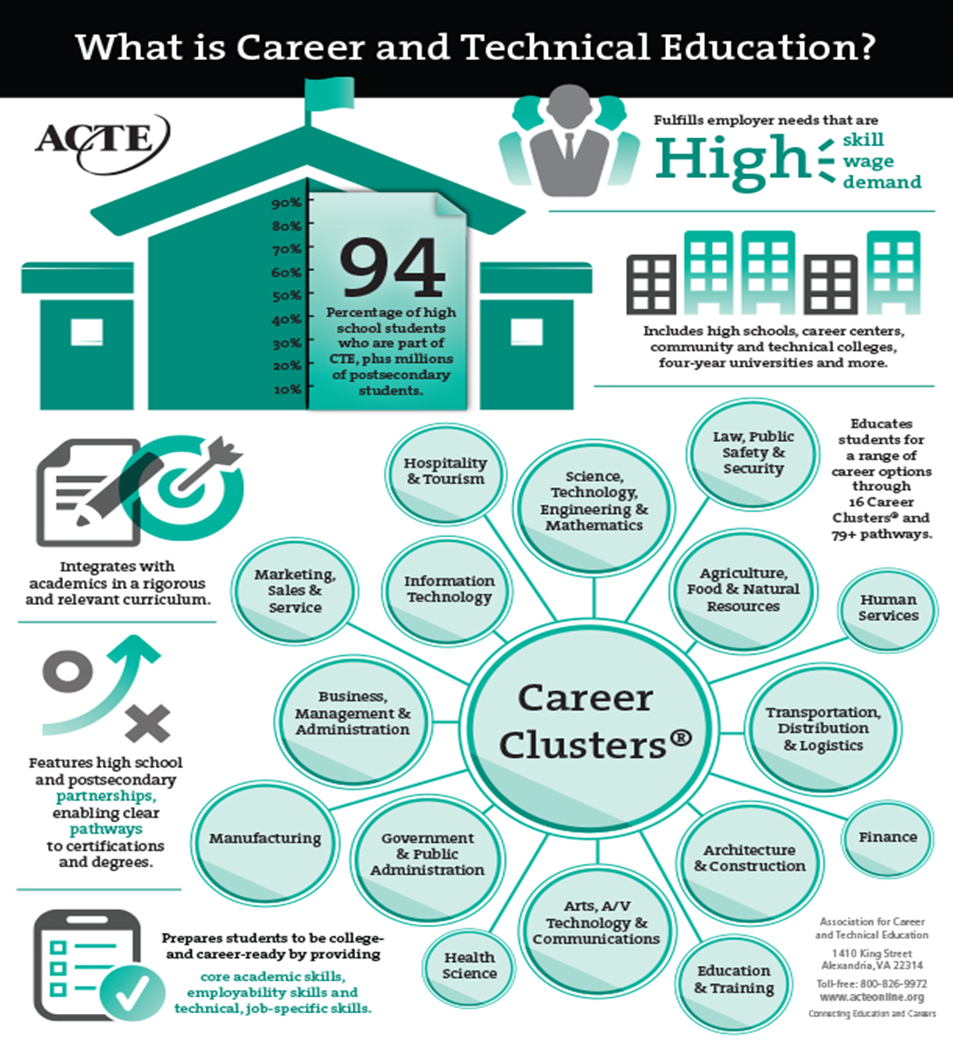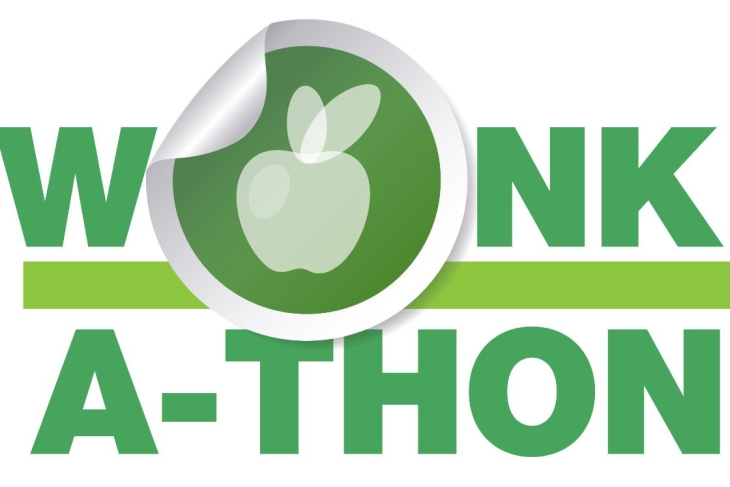Editor’s note: This essay is an entry in Fordham’s 2022 Wonkathon, which asked contributors to address a fundamental and challenging question: “How can states remove policies barriers that are keeping educators from reinventing high schools?” Learn more.
Reiterating the obvious is sometimes necessary, especially when the goal is to drive home a significant point. In this case, the pervasive student disengagement in American high schools and its ramifications, including but not limited to inadequate post-secondary preparation leading to even more shortcomings for many in terms of employment and civic engagement (Washor and Mojkowski, 2014; Flores & Graham-Brown, 2019).
On the other hand, available data (2018–2019) for the average adjusted cohort graduation rate (ACGR) for public high school students in the United States was 86 percent. Two states, Arizona and New Mexico, and Washington, D.C., have graduation rates below 80 percent. (See Figure 1, below.) The question then is: How do these graduates fare after high school? I will revisit this question momentarily. It is equally important to mention here that the average dropout rate for sixteen- to twenty-four-year olds in the U.S. was 6 percent for the cohort 2013–2017. (See Figure 2, below.) Sixteen states had averages that are higher for the same cohort. This is clearly troubling. Additionally, evidence suggests that many high school students tend to struggle in their first year of college due primarily to inadequate preparation (Wickli, 2018; McCarthy & Kuh, 2006). In many states, student graduation requirements emphasize credit accumulation, arguably at the expense of knowledge acquisition and skill building. For example, New York State requires high school students to accumulate twenty-two unit credits (this is tantamount to forty-four semester credits in NYC) and pass five Regents examinations. Plus, there are ways to appeal students’ scores that fall between 50 and 64; safety-net options for students with disabilities, and a Superintendent Determination Option for students to graduate with lower scores on the required Regents examinations. The end result of all this, at least in New York State, which happens to have one of the strictest high school graduation requirements in the country, is that, invariably, graduation rates will rise because of what some critics describe as loopholes. But are these graduates adequately prepared for college or the work world? The evidence suggests that they are not, and this has been exacerbated by the pandemic.
Employers, on the other hand, are clamoring for individuals with demonstrated skills in collaboration, versatility, problem solving, empathy, openness to learning new skills, communication, and team work (also known as soft skills). They also highlight math and analytical skills, language, data science and management skills, applied sciences, programming systems, and marketing (otherwise called hard or technical skills).
Career and technical education (CTE) is an area that has often been overlooked for its promise of long-term job stability, income, and other benefits, as well as positive academic impacts, according to researcher, Shaun Daugherty. In this rigorous, seminal work, Daugherty (2018) reports that high-quality CTE programs, such as the regional vocational and technical high school (RVTS) in Massachusetts, have the potential to raise the probability of on-time graduation from high school by 7–10 percentage points for higher income students, and even larger effects for lower-income students. Students participate by registering to study in any one of several CTE areas, such as cooperative education, advanced manufacturing, auto body/collision repair, automotive technology, business technology, cabinetmaking, CAD/drafting and design, cosmetology, culinary arts, dental assisting, early childhood education, electrical, engineering technology, graphic communication, health occupations, and many more.
New York State’s Boards of Cooperative Educational Services (BOCES) are similar to Massachusetts’ RVTS. BOCES have been around for seventy years, and there are thirty-seven of them in New York State. Since there is empirical evidence of the potentials of CTE program, my proposal is to enact laws that will allow states to create and adequately fund more of these types of programs, including provisions for staffing needs, recruitment, training, development, and retention. All available evidence to date points to the fact that these CTE programs are sorely needed by students, and the net gain for society when students successfully attend and graduate from these programs far outweigh what we currently have. Let students choose their paths to success while providing multiple opportunities and pathways for students to be successful as students and ultimately as productive citizens in a democracy.
Figure 1: Adjusted cohort graduation rate (ACGR) for public high school students, by state and categorized into specific ranges, 2018–19

Source: National Center for Education Statistics (NCES).
Figure 2: Percentage of high school dropouts among persons sixteen through twenty-four years old by state, 2013–2017

Source: National Center for Education Statistics (NCES)
Figure 3: Career and technical education

Source: SkillsUSA
___________
References
- Dougherty, S. M. (2018). The effect of career and technical education on human capital accumulation: Causal evidence from Massachusetts. doi:10.1162/EDFP_a_00224 © 2018 Association for Education Finance and Policy.
- Flores, M. E. & Graham-Brown, C. (2019). An examination of student disengagement and reengagement from an alternative high school. School Leadership Review, 14(1). Available at https://scholarworks.sfasu.edu/slr/vol14/iss1/5.
- McCarthy, M. & Kuh, G. (2006, May). Are students ready for college? What student engagement data say. Phi Delta Kappan, 664 – 669.
- McFarland, J., Cui, J., Holmes, J., and Wang, X. (2019). Trends in high school dropout and completion rates in the United States: 2019 (NCES 2020-117). U.S. Department of Education. Washington, DC: National Center for Education Statistics. Retrieved from https://nces.ed.gov/pubsearch.
- Washor, E. & Mojkowski, C. (2014). Student disengagement: It’s deeper than you think. Phi Delta Kappa International, 95(8), 8-10.
- Wickli, H. M. (2018). Are high school students really prepared for college? WRIT: Journal of First-Year Writing, 2(1)(1), 1-5. DOI: https://doi.org/10.25035/writ.02.01.01. Available at: https://scholarworks.bgsu.edu/writ/vol2/iss1/1.

